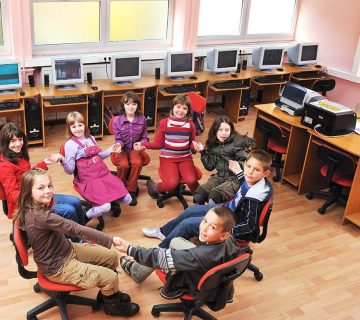Abstract
Play is one of the most effective tools for growth and learning in children. With the expansion of technology, computer games have become a major part of children’s leisure time, yet physical games still play a fundamental role in the child’s physical, social, and psychological development. This article compares these two types of play, analyzing the advantages, disadvantages, and effects of each on child development.
Introduction
Play is the language of childhood. Through play, children learn, interact, express their feelings, and practice life skills. In recent decades, computer games have rapidly expanded alongside digital technology. But can these games replace traditional physical activities? What are the differences between these two types of play, and which is more suitable for holistic child development?
Section 1: Physical Games and Their Characteristics
- Stimulate motor development and strengthen physical skills (balance, coordination, speed)
- Increase social interaction and teach principles of cooperation
- Release energy and reduce psychological tension
- Enhance emotional intelligence and verbal skills
- Examples: tug-of-war, hopscotch, hide-and-seek, soccer, cycling
Section 2: Computer Games and Their Characteristics
- Stimulate the brain through rapid information processing and hand-eye coordination
- Develop spatial skills, precision, and concentration
- Offer great variety in genres, themes, and objectives
- Support solo or online play with peers
- Examples: puzzle games, strategy games, simulations, action titles
Section 3: Advantages and Disadvantages
Physical Play
- Advantages: Increased activity, real-world interaction, improved physical skills, better sleep
- Disadvantages: Requires space, limited variety at times, weather-dependent
Computer Play
- Advantages: High diversity, interactive learning, enhanced focus and decision-making
- Disadvantages: Sedentary behavior, risk of addiction, reduced real-world interaction, potential eye strain
Section 4: Balance and Recommendations
- Neither type of play is complete on its own.
- Children need a balance of physical and mental activities.
- Limit screen time—no more than 1 hour per day for ages 3–6.
- Encourage group physical games while guiding children toward beneficial digital play.
Conclusion
Physical and computer games each have a distinct place in children’s lives. What matters most is managing playtime, choosing appropriate content, and staying engaged as a parent. The best outcomes occur when these two forms of play complement each other rather than compete.







